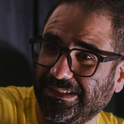It was, according to the Evening Standard, "the biggest shake-up the subsidised arts have ever faced." There were editorials in the Times and Guardian and items on the Today programme.
And what was this world-turning, cultural event? It was the launch of a small-time commercial opera company at the Savoy Theatre by the impresario Raymond Gubbay.
But in the end the world did not turn. And after only a few weeks, the Savoy Opera declared it would pack up in June because it was a business, ruled by the bottom line. And if you don't get enough paying customers, you close. It happens all the time.
But the brief existence of the Savoy Opera leaves a lingering question about why the general press made such an issue of it (the arts press, by and large, knew better). Why was it thought so significant? And why were so many journalists falling over themselves to believe Gubbay's own public relations about making art available to what the Standard trumpeted as "working men and women."
The answer is that it was another opportunity to characterise the arts in general - and opera in particular - as a bastion of elitism, the preserve of grandees who expect their pleasures to be subsidised by the taxpayer, the working man and woman whom the Standard, when it suits, mythologises.
Gubbay's shows allegedly don't play to grandees. And they get no public subsidy. They are commercial, and he makes a virtue of it. In the past few years he has rarely missed an opportunity to proclaim that, given that he can put on opera without subsidy, why can't everybody else? Why siphon vast amounts of public money into the coffers of the Royal Opera or ENO when practical men can roll their sleeves up, shove the stuff on at a fraction of the cost, with no call on the lottery or taxpayer, but with ticket prices everybody can afford? No fuss. No diamonds and tiaras. Easy peasy.
Writing as someone who loves opera, I can see, up to a point, the virtues of his argument. I don't want opera to be diamonds and tiaras, playing to a ghetto of the rich. I want its marvels to be appreciated by the whole world. I'm an evangelist. And I want more, not less - which means I wasn't hostile to the creation of Savoy Opera and do not celebrate its collapse.
But that said, I also want my widely available opera to be of the highest quality. I want it powerfully presented, with vitality and imagination, by the best singers, directors and designers. I want it to explore the full repertory, not just deliver a Classic FM selection of your 20 favourite tunes. And because opera, like most aspects of classical music, is geared to economic systems that no longer obtain, I know it to be unavoidably expensive - which means it can only be widely available, with high quality, if it is subsidised.
When Gubbay tells the press that he can do it without subsidy, what he means is that he can put on the occasional performance of a handful of core repertory works - a Carmen or Boh?me or Madama Butterfly - and make a profit. But you won't find him doing anything vaguely off-centre like the Arabella running now at Covent Garden, still less the Ring running at ENO.
What's more, he only manages to do the Carmens and Boh?mes by cutting every corner going: cheap stagings, cheap singers (many barely out of college), cheap orchestral players (ditto) and minimum rehearsal. In fairness to Gubbay, his big stadium-stagings at the Albert Hall have been getting better. But they started from a low base. And the shows that launched his abortive Savoy season were savaged by every credible critic in London.
The building up of Gubbay was all part of a familiar game of "bash the luvvies." But games sometimes have dangerous outcomes, and had the Savoy Opera succeeded it would certainly have been used to prop up the anti-arts subsidy argument.
For that reason it is worth considering two important facts. First, Savoy Opera tickets were not significantly cheaper than those of the subsidised companies. Second, there is no hard evidence to suggest that Savoy attracted a broader audience base.
The majority of Savoy tickets sold for between ?40 and ?50. The same could be said for the majority of ENO tickets, and having a larger auditorium ENO is also able to offer more at lesser prices, right down to ?8 as against the Savoy's rock bottom of ?10.
As for the Royal Opera, 50 per cent of the house sells for ?50 or less (50 per cent is 1,100 places, which is the capacity of the whole of the Savoy Theatre), with 272 tickets every night available at ?10 or less. What's more, with effect from next season, there will be a further 100 best seats in the stalls available on the day for ?10, courtesy of a new sponsorship deal.
On social background, the Savoy Opera has no statistics; but from looking round the auditorium I would say that the audience was no broader than that of ENO and, if anything, more up-market. At Covent Garden, where there is data, 39 per cent of ticket-buyers are new to the house, and 58 per cent earn less than ?30,000 a year.
So much for the Gubbay revolution.












